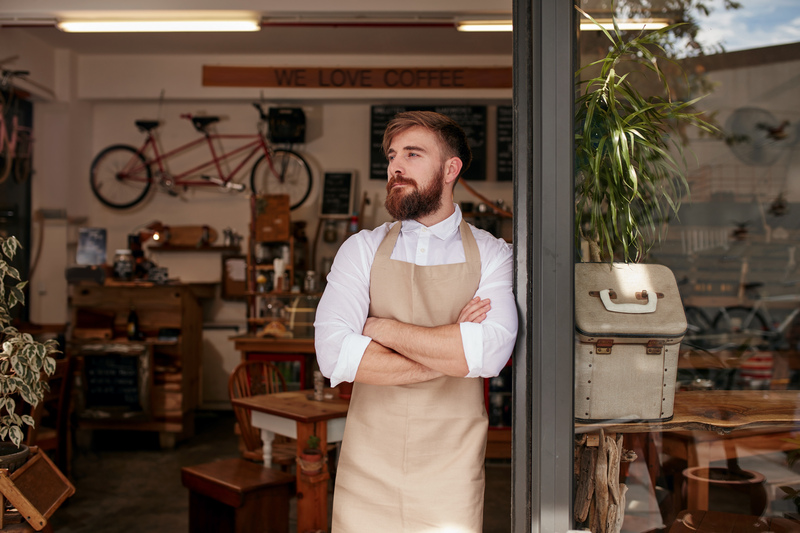Pro Tips for an Efficient Packing Process in Moving
Posted on 18/05/2025
Pro Tips for an Efficient Packing Process in Moving
Are you feeling overwhelmed thinking about your upcoming move? Packing might just be the most stressful part of relocating, but it doesn't have to be! An efficient packing process can save you time, money, and headaches. In this comprehensive guide, we'll share proven moving and packing tips from the pros so you can master the art of packing for a move. Whether you're relocating across town or to another state, these packing efficiency tips will help make your transition smooth and organized.
Why an Efficient Packing Process Matters
Many people underestimate how much work goes into packing for a move. Without a well-organized packing strategy, it's easy to misplace valuables, damage fragile items, or end up unpacking boxes for days! A streamlined packing process ensures:
- Easier unpacking after the move
- Fewer lost or damaged belongings
- Lower stress levels for everyone involved
- Reduced moving time and costs
- Minimal disruption to your daily life

Start Early and Make a Plan
1. Set Up a Packing Timeline
One of the golden rules of efficient packing is to start as early as possible. Procrastination leads to chaos. Create a realistic packing schedule, breaking down the process into manageable stages. For example:
- 4-6 Weeks Before the Move: Begin decluttering and gathering packing supplies.
- 3-4 Weeks Before: Pack non-essential items (seasonal decor, books, etc.).
- 2 Weeks Before: Pack rarely-used kitchenware, linens, and clothes.
- 1 Week Before: Begin boxing up daily essentials, leaving only what you need for the last days.
This approach ensures that your move remains organized and stress-free.
Declutter and Organize Before Packing
2. Sort and Purge
Don't waste time and money transporting things you don't need. Before putting anything in boxes, sort through your belongings. Use the classic "Keep, Donate/Sell, Toss" method:
- Keep: Only items you love, use, or need for your new home.
- Donate/Sell: Unused clothes, kitchen gadgets, decor items, and furniture in good condition.
- Toss: Broken, outdated, or unnecessary items.
A thorough decluttering session will reduce your packing load and make unpacking much simpler.
3. Take Inventory
As you sort, create a detailed inventory of everything you're taking. This is especially useful for large households and is invaluable in case of loss or damage. Use a spreadsheet or inventory app, listing items by room and box.
Gather High-Quality Packing Supplies
4. Choose the Right Materials
The more organized your packing materials are, the smoother the packing process will be. Here's what you'll need:
- Sturdy boxes in various sizes
- Packing paper or newsprint for wrapping dishes and decor
- Bubble wrap for fragile items
- Moving blankets and pads to protect furniture
- Heavy-duty packing tape
- Permanent markers for labeling
- Ziploc bags for hardware and small items
- Plastic wrap for bundling and sealing
Pro Tip: Don't skimp on boxes and tape. Flimsy supplies may collapse or tear, damaging your items.
Room-By-Room Packing Strategies
5. Tackle One Room at a Time
For an efficient moving and packing process, focus on one room before moving to the next. This keeps things organized and makes it easier to unpack.
6. Pack Similar Items Together
Keep similar items in the same box. For instance, pack all your books together, separate from kitchenware or clothes. This makes labeling easier and aids in a smooth unpacking process.
Pack Smart: Label and Color-Code
7. Label Every Box Clearly
Labels are your best friend. Mark every box with:
- The room it belongs to (e.g., "Kitchen, Dishes")
- Contents (a rough list of items inside)
- Special handling instructions (e.g., "Fragile", "This Side Up")
When movers (or your helpers) know where boxes go, the unloading process is much faster and more efficient.
8. Use a Color-Coding System
Professional movers swear by color-coding. Assign each room a color and use colored tape or stickers on the boxes. Tape a color legend near the entrance of your new home so everyone knows where to put each box.
Efficient Packing Tips for Different Items
9. Protect Fragile and Valuable Items
- Wrap each fragile item individually in bubble wrap or packing paper.
- Fill empty spaces in boxes with crumpled paper or towels to prevent movement.
- Pack plates vertically, not flat, to reduce the chance of breakage.
- Use original boxes for electronics and appliances if possible.
Pro Tip: Mark boxes with glassware or valuables as "FRAGILE" on every side.
10. Disassemble Furniture and Keep Hardware Safe
- Take apart large furniture when possible for easier transport.
- Keep screws, bolts, and fasteners in labeled Ziploc bags taped to the furniture.
- Take photos of the disassembly process to make reassembly a breeze.
11. Make an Essentials Box
Pack one or two boxes with items you'll need right away. This might include:
- Clothes and toiletries for a couple of days
- Medications and important documents
- Chargers, basic kitchenware, snacks, and cleaning supplies
- A few favorite toys for kids or pets
Label this box "OPEN FIRST" and keep it accessible during the move.
12. Seal Boxes Securely
Always seal boxes tightly with heavy-duty tape. Reinforce the bottom and edges of heavy boxes. For bulky items, consider double-boxing or additional reinforcement.
13. Don't Overpack Boxes
It's tempting to stuff boxes to the brim, but don't exceed 40-50 lbs per box to avoid injury and box breakage. Heavier items go in smaller boxes, lighter items in larger boxes.
Leverage Technology for Packing Management
14. Use Packing and Inventory Apps
Take advantage of digital tools to track boxes and contents. Apps like Moving Van, Sortly, or even Google Sheets can help streamline inventory and reduce moving-day stress.
15. Photograph Box Contents
Take photos of open boxes before sealing them. This creates a visual inventory and helps you locate items faster.
Get the Whole Household Involved
16. Assign Tasks
If you're moving with family or roommates, divide packing duties. Assign rooms or zones to each member, and check in regularly to stay on schedule.
17. Keep Kids and Pets Safe
Set aside a "packing-free" zone for children and pets on moving day. This keeps chaos to a minimum and ensures everyone's safety.
Professional Movers: Should You Hire Help?
18. Know When to Bring in the Experts
For a large-scale move or if you're pressed for time, hiring professional packers can be a great investment. Moving and packing companies bring speed, expertise, and insurance for your belongings.
Still, even if you hire professionals, you'll benefit greatly by decluttering and organizing before they arrive!
Bonus Tips for a Stress-Free Move
- Update your address with utility companies, banks, and subscriptions before moving day.
- Keep important documents (passports, contracts, birth certificates) with you--not in boxes.
- Label cords and cables with stickers or tags to make reconnecting electronics easy.
- Plan meals in advance for moving week to avoid last-minute chaos.

The Bottom Line on an Efficient Packing Process in Moving
Mastering the efficient packing process for moving can transform a potentially stressful event into a smooth transition. By starting early, decluttering, using the right materials, and labeling meticulously, you'll save time and avoid headaches both during and after your move.
No matter how large or small your move, a little planning and these pro packing tips will go a long way! Happy moving!
Frequently Asked Questions (FAQs) about Efficient Moving and Packing
-
How can I speed up my packing process?
Start early, focus on one room at a time, gather all supplies before you begin, and ask friends or family for help. -
What should I pack last before moving?
Pack daily essentials (toiletries, medications, a change of clothes, chargers) last in a clearly marked box. -
Is it worth hiring professional packers?
If time is tight or you have valuable/fragile items, professional packers can be a major time-saver and offer peace of mind. -
How do movers and packers pack clothes?
Use wardrobe boxes for hanging clothes; otherwise, pack folded clothes in suitcases, bins, or boxes. Rolling clothes can save space and prevent wrinkles.
Recap: The Ultimate Packing Efficiency Checklist
- Declutter before packing
- Create a moving timeline
- Use high-quality packing supplies
- Label and color-code every box
- Pack smart by room and by item
- Don't overpack boxes
- Disassemble furniture and secure hardware
- Take inventory of contents
- Keep an essentials box accessible
- Consider hiring professionals if needed
With these pro tips for an efficient packing process in moving, you're well equipped for a seamless, organized, and successful transition to your new home.


